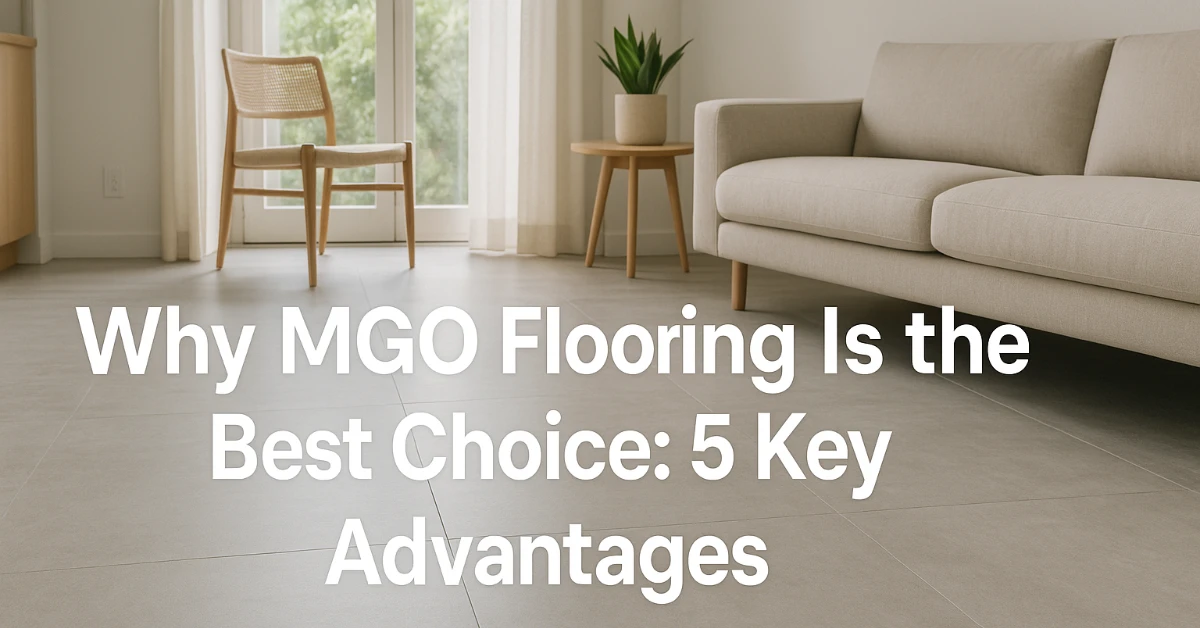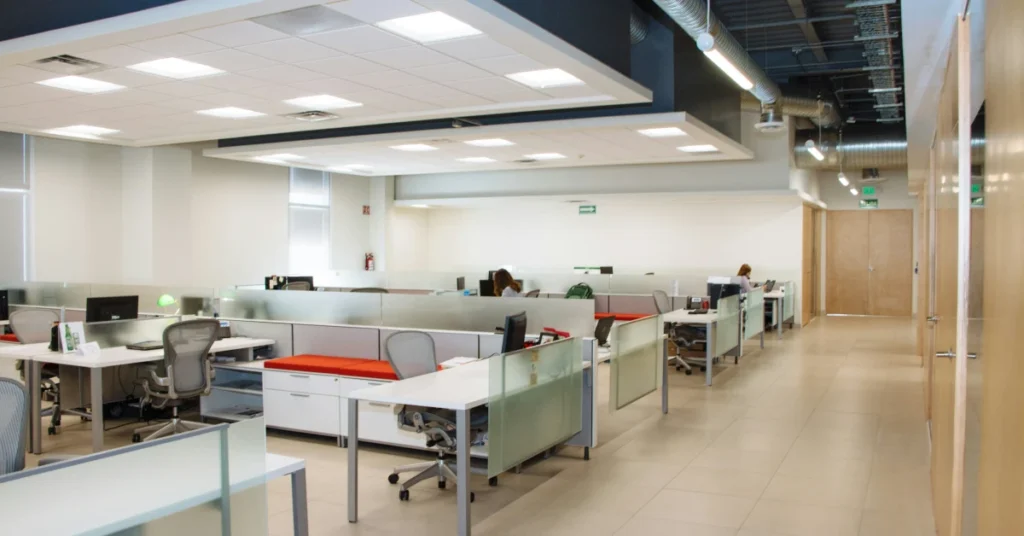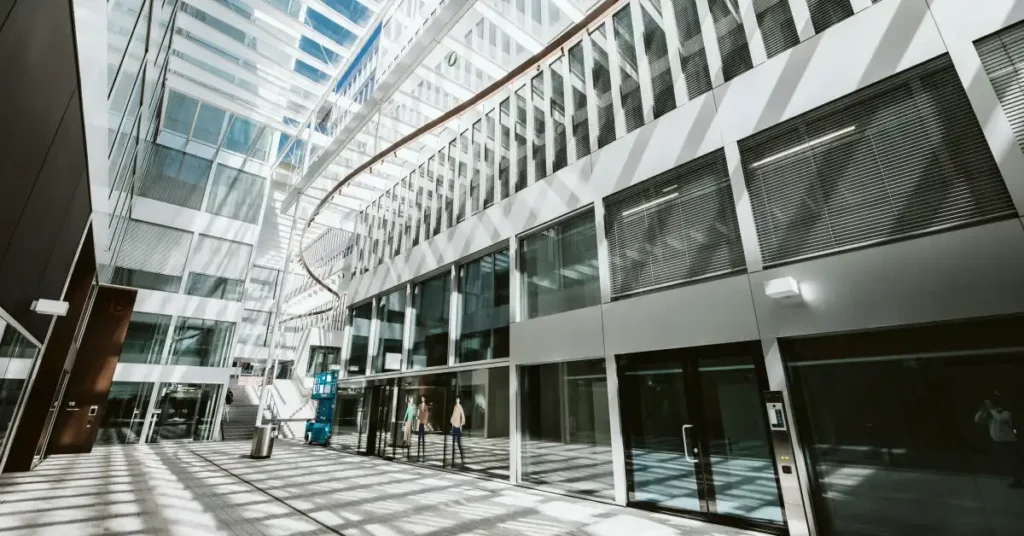- Introduction to MGO Flooring
- Fire Resistance: A Critical Advantage
- Durability: Built to Last
- Sustainability: An Eco-Friendly Choice
- Design Flexibility: Aesthetic Appeal
- Cost-Effectiveness: A Smart Investment
- MGO Flooring vs. Traditional Flooring Materials
- Installation Process and Considerations
- Conclusion: Making the Switch to MGO Flooring
Introduction to MGO Flooring
MGO flooring, or magnesium oxide flooring, is rapidly gaining traction in the realm of modern construction due to its impressive range of properties and benefits. This innovative material is primarily composed of magnesium oxide, which is derived from naturally occurring minerals. magnesium oxide flooring presents an environmentally friendly alternative to traditional flooring solutions, as it is often made from sustainable materials, contributing to its appeal among eco-conscious builders and homeowners alike.
One of the most significant features of MGO flooring is its fire-resistant properties. Unlike many conventional flooring options, this material has a high tolerance for heat and flame, making it an excellent choice for residential and commercial spaces that prioritize safety. Additionally, the inherent moisture resistance of magnesium oxide contributes to the durability of magnesium oxide flooring. This characteristic makes it particularly suitable for areas prone to humidity and water exposure, such as basements and bathrooms.
Moreover, MGO flooring is known for its sound insulation abilities, effectively reducing noise transmission and enhancing overall comfort in indoor environments. This quality is especially desirable in multi-family housing units and offices, where a peaceful atmosphere is essential for productivity and relaxation. The lightweight nature of MGO boards further simplifies the installation process, making it a preferred option for contractors aiming to streamline construction timelines without sacrificing quality.
The rising demand for MGO flooring can be attributed to a combination of its durability, safety, and aesthetic versatility. With a variety of finishes and styles available, it can seamlessly integrate into both contemporary and traditional design schemes. Overall, magnesium oxide flooring is proving to be a robust and reliable flooring solution that addresses multiple needs within today’s building practices.
Fire Resistance: A Critical Advantage
MGO flooring, made from magnesium oxide, offers remarkable fire-resistant properties that set it apart from traditional flooring materials. One of the most significant advantages of magnesium oxide flooring is its ability to withstand high temperatures without igniting. Unlike conventional materials such as wood or carpet, which are prone to catch fire and burn quickly, MGO flooring remains stable and minimizes the spread of flames. This critical safety feature makes it an optimal choice for commercial spaces, residential homes, and environments that prioritize fire safety.
When subjected to fire conditions, magnesium oxide reacts by forming a protective layer that inhibits further damage. This unique characteristic allows MGO flooring to significantly outperform materials like plywood or vinyl flooring, which can easily contribute to a fire’s intensity. Statistical data supports this claim, as buildings with fire-resistant flooring options experience lower rates of fire propagation and reduced insurance claims associated with fire damage. For instance, studies indicate that structures equipped with fire-resistant materials can reduce the risk of extensive damage by up to 50% in the event of a fire.
Furthermore, MGO flooring is not only resistant to flames but also to smoke and toxic fumes, which can pose significant health risks during a fire. Traditional flooring often emits harmful substances when burned, impacting air quality and exacerbating dangers during emergencies. In stark contrast, magnesium oxide flooring demonstrates low smoke emission levels and safer degradation under fire conditions. This combination of fire resistance and lower toxicity makes MGO flooring an excellent choice for ensuring the safety of occupants.
Overall, the fire-resistant properties of MGO flooring significantly enhance safety in any space. By choosing this innovative flooring option, property owners can invest in a material that not only meets aesthetic and functional needs but also provides critical fire protection, ensuring peace of mind for residents and businesses alike.
Durability: Built to Last
MGO flooring, known for its significant durability, is designed to withstand a variety of environmental and physical stresses. This flooring option exhibits remarkable resistance to wear and tear, making it suitable for both residential and commercial settings. Unlike traditional flooring materials such as wood or carpet, magnesium oxide flooring can endure impacts and daily usage without showing significant signs of damage. Its robust composition helps in withstanding the challenges posed by high foot traffic, ensuring that it maintains its aesthetic appeal over time.
One of the standout features of MGO flooring is its impressive moisture resistance. Unlike many flooring types that can warp or suffer from water damage, MGO panels are engineered to repel moisture effectively. This is particularly beneficial in environments such as kitchens, bathrooms, and basements where exposure to moisture is commonplace. The longevity of magnesium oxide flooring under such conditions showcases its superior performance compared to alternatives, reducing the need for frequent replacements due to wear or water damage.
Real-world examples highlight the efficacy of MGO flooring in demanding settings. For instance, in commercial environments such as retail spaces and hospitals, magnesium oxide flooring has consistently proven its ability to stand up to rigorous use without deteriorating. Facilities that require high hygiene standards also favor MGO due to its ease of cleaning and inherent resistance to mold growth. Additionally, outdoor applications, including patios and walkways, have shown that MGO flooring retains its integrity, regardless of exposure to varying weather conditions.
The properties of MGO flooring confirm that it is built to last, making it an ideal choice for those seeking long-term resilience and maintenance-free beauty in their living or working spaces.
Sustainability: An Eco-Friendly Choice
MGO flooring is increasingly recognized for its sustainability, emerging as a frontrunner in the eco-friendly flooring market. Made predominantly from magnesium oxide, which is sourced from natural materials such as seawater and minerals, magnesium oxide flooring offers a renewable resource compared to conventional flooring materials like hardwood or vinyl, which often contribute to deforestation and plastic waste. This natural sourcing reflects a commitment to sustainable practices that are essential in today’s environmentally-conscious landscape.
One of the standout features of MGO flooring is its complete recyclability, enabling it to be repurposed at the end of its life cycle. Unlike many flooring options that either end up in landfills or undergo energy-intensive recycling processes, magnesium oxide flooring can be broken down and used to create new products, significantly reducing waste and contributing to a circular economy. This aspect is particularly appealing to those looking to minimize their ecological footprint and contributes to MGO’s growing popularity among environmentally aware consumers.
Furthermore, MGO flooring’s production process generates fewer greenhouse gases compared to traditional flooring materials. For instance, the manufacturing of laminate or engineered wood often involves harmful chemicals and significant energy consumption. In contrast, magnesium oxide flooring is produced using sustainable techniques that focus on reducing carbon emissions. Various certifications and standards further support MGO flooring’s eco-friendly claims, including LEED certification and compliance with stringent emissions regulations, validating its credentials as an environmentally responsible choice.
In conclusion, selecting MGO flooring not only enhances interior aesthetics but also aligns with sustainable living principles. By choosing flooring made from natural materials, promoting recyclability, and supporting energy-efficient production methods, consumers can make a significant positive impact on the environment.
Design Flexibility: Aesthetic Appeal
MGO flooring offers remarkable design flexibility, making it an aesthetically appealing choice for diverse interior environments. One of the standout features of magnesium oxide flooring is its ability to be customized in a variety of finishes, colors, and shapes, which allows homeowners and designers to tailor their spaces to meet specific stylistic preferences. Whether one desires a sleek and modern look or a more rustic ambiance, MGO flooring can easily adapt to complement any interior design trend.
The versatility of MGO flooring extends beyond basic colors; it can mimic the appearance of natural materials such as hardwood or stone. For example, contemporary design trends emphasize streamlined, minimalistic interiors characterized by clean lines and neutral palettes. MGO flooring can seamlessly integrate into these spaces, providing a polished and sophisticated foundation. Additionally, the trending use of bold colors and patterns can also be achieved through magnesium oxide flooring options that allow for vibrant accent pieces or unique geometric designs.
Another key aspect of MGO flooring’s design flexibility is its compatibility with various architectural styles. Whether incorporated into a traditional home with classic elements or a modern loft with industrial features, magnesium oxide flooring can enhance the overall aesthetic. Furthermore, residential and commercial spaces alike are discovering the advantages of MGO flooring; from chic cafes to upscale boutiques, the customizable nature of MGO flooring allows for cohesive branding and an inviting atmosphere.
As design trends evolve, MGO flooring remains a preferred selection as it accommodates both current styles and future changes. Its inherent adaptability makes it a wise investment for anyone seeking to create an appealing and customizable interior space. In conclusion, the aesthetic appeal of magnesium oxide flooring, combined with its design flexibility, ensures that it can meet the diverse needs of any project.

Cost-Effectiveness: A Smart Investment
When considering flooring options, the economic aspects are often at the forefront of decision-making. MGO flooring is increasingly recognized for its cost-effectiveness, combining affordable initial investment with substantial long-term savings. Initially, magnesium oxide flooring may appear slightly higher in price compared to some traditional materials such as carpet or vinyl. However, it is crucial to evaluate the total cost of ownership over the lifespan of the flooring.
One of the primary advantages of MGO flooring is its durability. This flooring type is resistant to scratches, dents, and impact, making it less susceptible to damage compared to softer materials. This resilience translates into lower repair and replacement costs over time. Additionally, MGO flooring does not warp or expand in varying moisture conditions, which is a common issue with wood floors and can lead to expensive fixes. By investing in magnesium oxide flooring, homeowners and businesses alike can expect fewer maintenance expenses and a reduced need for replacements.
Moreover, MGO flooring requires minimal upkeep, as it is resistant to stains and can be cleaned easily without harsh chemicals. This simplicity not only saves time but also reduces cleaning costs and product purchases over the years compared to other flooring types that may require specialized care.
When making price comparisons, it is essential to factor in both initial installation costs and the longevity of each flooring option. Many conventional flooring choices necessitate significant upkeep costs and replacements in a fraction of the lifespan that MGO flooring will offer. Therefore, while the upfront costs of magnesium oxide flooring may be higher compared to some alternatives, the lower total cost of ownership makes it a financially wise choice in the long run.
MGO Flooring vs. Traditional Flooring Materials
When considering flooring options, MGO (magnesium oxide) flooring stands out as a compelling choice compared to traditional materials such as wood, laminate, and tile. Each of these options possesses unique characteristics, advantages, and disadvantages that can significantly impact a property’s aesthetics, durability, and maintenance requirements.
Wood flooring is renowned for its natural beauty and warmth; however, it is susceptible to issues such as scratching, warping, and moisture damage. Additionally, the cost of high-quality wood can be substantial, and replacing damaged sections often requires extra resources. MGO flooring addresses these concerns as it is inherently moisture-resistant and less prone to physical damage, making it a more sustainable long-term investment.
Laminate flooring serves as an economical alternative to traditional hardwood. While laminate can mimic the appearance of wood or tile at a lower cost, it often sacrifices durability and authenticity. Over time, laminate can fade under sunlight or suffer significant wear in high-traffic areas. MGO flooring, in contrast, not only offers aesthetic versatility but also provides a robust, scratch-resistant surface that maintains its integrity. Furthermore, MGO does not emit volatile organic compounds (VOCs), enhancing indoor air quality.
Tile flooring is prized for its durability and ease of maintenance, particularly in wet environments. However, the installation process can be labor-intensive and costly. Additionally, tile can feel cold and hard underfoot, which may not appeal to all homeowners. MGO flooring effectively addresses comfort issues while still providing the practical benefits of durability and ease of cleaning.
In summary, when weighing MGO flooring against traditional flooring materials, it becomes evident that MGO offers several advantages that enhance functionality, aesthetics, and environmental considerations, positioning it as a preferred option for many residential and commercial spaces.
Installation Process and Considerations
The installation of MGO flooring is a critical step that can significantly influence its performance and longevity. Proper installation ensures that the advantages of magnesium oxide flooring—such as its strength and moisture resistance—are fully realized. It is essential to follow recommended practices, which include preparing the subfloor, acclimating the MGO boards, and using suitable adhesives or fasteners.
Before installation, the subfloor should be thoroughly cleaned, leveled, and free from debris. Any uneven surfaces can lead to complications, such as warping or misalignment, in the flooring itself. Acclimation of MGO flooring is also paramount; allowing the boards to adjust to the room’s temperature and humidity promotes optimal expansion and contraction, preventing gaps or buckling later on.
During the installation, one must take into account the specific requirements of the environment. For example, areas with high humidity levels may require additional moisture barriers to protect the integrity of the flooring. It is advisable to make use of high-quality MGO-compatible adhesives to secure the flooring effectively while maintaining a level surface. Additionally, precision in cutting and fitting is crucial; any inaccuracies can result in reduced durability and aesthetics.
While DIY installation of MGO flooring is an option, it is often more advantageous to hire professionals. Experienced installers bring knowledge of best practices and can navigate potential challenges effectively. However, if one opts for a DIY project, adequate research and planning must be undertaken. Understanding the tools required, safety measures, and possible pitfalls can help ensure a successful installation.
Overall, whether choosing a professional service or taking on a DIY approach, adherence to correct installation practices is vital for optimal results. Properly installed MGO flooring not only enhances the beauty of a space but also provides lasting quality and durability.
Conclusion: Making the Switch to MGO Flooring
In reviewing the advantages of MGO flooring, it becomes increasingly evident why this material deserves serious consideration for modern construction projects. Its superior durability is a significant factor; MGO flooring can withstand various environmental conditions without buckling or warping. This resilience leads to reduced maintenance needs and extended product lifespan, allowing homeowners and builders to invest in a flooring solution that favors longevity.
Another key advantage is MGO flooring’s exceptional fire resistance, which is critical for safety in residential and commercial buildings alike. The material does not support flames, thereby providing peace of mind to occupants and enabling compliance with stringent building codes. Furthermore, its eco-friendly characteristics—derived from non-toxic materials—make it an attractive option for environmentally conscious consumers seeking sustainable living solutions.
Cost-effectiveness is yet another point in favor of MGO flooring. Though the initial investment may be comparable, the long-term savings accrued from reduced repairs, replacements, and energy efficiency cannot be overlooked. MGO flooring also offers a versatile aesthetic appeal, available in various designs and finishes that suit different architectural styles.
Given the compelling benefits of MGO flooring, it is clear that making the transition to this innovative flooring solution is a wise choice for any upcoming building project. Readers are encouraged to delve deeper into magnesium oxide flooring options, considering professional consultation to explore the possibilities this material presents. Embracing MGO flooring could very well redefine your approach to sustainable and resilient construction.


